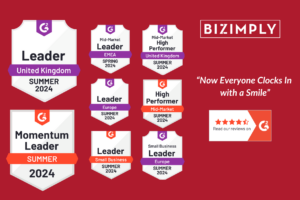The way we work has completely shifted over the past year, we entered a massive social experiment of working remotely and most of us still remain here. Will staff ever want to return to the workplace full time, part time or at all? With technology making the hybrid work model more possible, less harmful impacts on the environment and more time for ourselves; it has definitely affected the way in how we can work.
CIPD, the professional body for HR and people, said two-thirds of organisations are developing a hybrid working model where people have the balance of working at home and in the office. About 71% of employers said that staff at home have been working more productively.

So, what is hybrid working?
Hybrid working is a style of working which allows employees to split their time between working in different various locations; the office, at home or on the go. Some employers have even let their employees travel or move abroad to different destinations and can now be listed as one of the benefits to attract new employees. There are strong opinions that hybrid working increases productivity, flexibility, greater positive working relationships amongst employees and better routines.
How can leaders balance employee needs and aspirations when implementing the hybrid work model?
Be there.
Your leadership role as manager, CEO, supervisor, should always be about supporting your employers. When COVID-19 came along, everyone faced an increase of huge stress between work and the heightened risk of catching a worldwide deadly disease. Where you have good leaders who are empathetic, invested time in communication, were authentic and created a clear sense of purpose throughout these times, highlights your ability to offer support and in return employees feel valued. So reaching out and offering support remains vital. How can you do this? Organise calls with your colleagues; one-to-ones, team calls and the occasional fun round up! Ask them more about their personal lives (to a degree), see if they’re coping with their workload and encourage them to offload any work related queries or problems. Continue to do this as some employees adapt to different surroundings and routines at different stages. This will align with a strong degree of autonomy; you can trust your employees and create opportunities for them whilst embracing this hybrid work model.
Create and set expectations.
Practices and protocols. These are two important P’s that your team needs to be updated about daily, any changes you are going to make to the organisation’s culture, your team need to be told so they can adjust immediately. Inform your employers of how you will communicate with them, how they will access information at home, what annual meetings will take place and also what is expected of them. Communication norms should be explicit; should the whole team be asked every question that arises or just specific departments involved? Should every message be responded to? These are the questions that will be running through their minds, so clarification is needed. Outline and emphasise what your main communication tools are and which of these apps you are going to be active on. Working hours and expectations need to be defined when embracing a hybrid work model. Therefore, your goal as a group is to build and enforce a new culture by finding out what is the best way for your team to collaborate, make a decision and stick to it.
Emphasise inclusion.
A hybrid work model can make it more difficult to build a fair workplace. There’s a proximity bias that leads to the incorrect assumption that “the people in the office are more productive than those who are not,” (Hill, 2020). You, as the leader need to reinforce this is not the case and ensure there are workplace practices to neutralise this opinion of discussion. It is an idea to establish that all meetings take place via Zoom even if some of those joining the meeting are in the office that day. This eliminates the fear of those who are not present in the office to feel out of touch with what is going on and everyone is up to date with the current situation. Also it diffuses distraction from possible side chat or other distractions.
Watch for signs of exhaustion
Despite increased productivity being a positive thing for your organisation, having the convenience of access to your workload can lead to employees working long into the evenings or starting work earlier than usual. This can lead to exhaustion and irritability, and perhaps in the long run, complete burnout. Watch out for the signs of these behaviours; if you notice somebody has become a lot quieter than usual or overwhelmed, try talking to them and help them organise and prioritise their workload. Sometimes taking a step back and using this approach allows them to gain greater insight into what actions need to be carried out and suggest efficient ways of doing this. This can lead to greater focus on those tasks and a more powerful hybrid work model.
Can the hybrid work model improve company culture?
Hybrid work can definitely provide employees with more flexibility, freedom and satisfaction. The work-life balance allows employees to have more time to make social plans, spend time with family or get other jobs done as they are no longer ‘wasting time’ on their commute to and from the office. This new hybrid approach can be carried out very effectively by employers and instilling the trust in your employers to maintain performance levels outside of work is extremely important. Employers should be availing of this hybrid model for their benefit, using it to create a modern, dynamic, and positive work culture.
What if your organisation does not adapt to the hybrid work model?
Step back and think systematically about the different roles and teams you have in your workplace. There are models in between; connected remote (in office a couple of times a month) alternate model (onsite presence but changes days up weekly) and mixed attendance (set days for different locations). You need to analyse what kind of workspace you need to design this and maintain productivity levels. To what extent can you accommodate your employees; you need to think longer term as the previous way of working has changed forever and the hybrid working model is looking to be the way forward.












